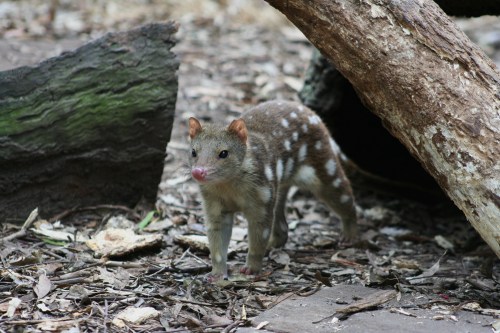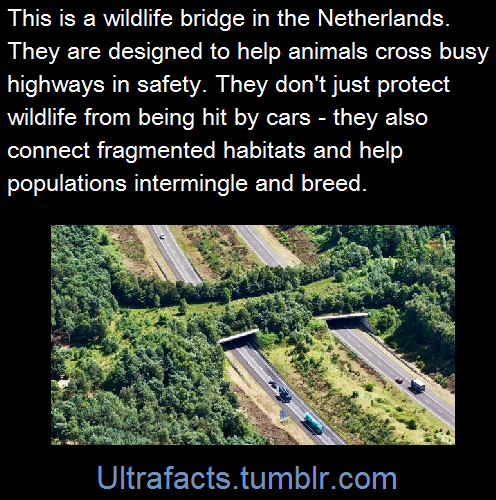Observation Of The Week, 3/9/16
Observation of the Week, 3/9/16

This Zombie Ant Fungus seen by jonathan_kolby in Cusuco National Park, Honduras is our Observation of the Week.
“I was walking down the trail, in pursuit of a frog, when this alien-like creature suddenly grabbed my attention out of the corner of my eye,” says National Geographic Explorer Jonathan Kolby. “This was the first time I had ever seen cordyceps fungus and didn’t know what it was at the time.” What he photographed (identified by Prof. David Hughes of Penn State), is likely the incredible fungus known as the Zombie Ant Fungus, which parasitizes its insect host and basically controls its brain. The host is often compelled to climb up the stem of a plant and uses its mandibles to latch onto it (known as the “death grip”). Fruiting bodies of the fungus eventually grow out of the host and release spores back into the forest. “After seeing this in person, I don’t think anyone would argue that nature is more amazing than the best sci-fi movie,” he says. “I now keep my eyes peeled every time I return to the forest to see if I can find another zombie insect! Just a few weeks ago, I found another one, this time of a moth (see below).”

(By the way, the BBC has incredible footage of an ant afflicted by Zombie Ant Fungus, you should definitely check it out.)
It is, however, another fungus which brings Jonathan to the rainforests of Honduras - Batrachochytrium dendrobatidis, commonly known as chytrid. It and the newly discovered B. salamandrivorans cause the disease chytridiomycosis, which is devastating amphibian populations around the world. The fungus does its damage by affecting the keratin-producing layer of skin in amphibians, disrupting electrolyte balance and chemical flow, “and ultimately kills the amphibian by causing a little froggy heart attack,” says Jonathan. For the past 10 years, Jonathan has specifically been working to combat the global amphibian extinction crisis and recently established the Honduras Amphibian Research & Conservation Center (http://www.FrogRescue.com), where they are working to protect three endangered species of frogs from chytrid. He’ll be finishing up his PhD at James Cook University in Australia and “now wants to help develop policies to protect biodiversity from emerging infectious diseases, reduce the spread of invasive species, and combat the illegal wildlife trade.”
Believing that photography and social media are important for raising awareness about these issues, Jonathan is active on many social media outlets (see below) one of which is iNaturalist. In addition to adding his own observations, he created an iNaturalist Project called Saving Salamanders with Citizen Science, where he’s asking folks to upload any photos they have of dead salamanders. “A new chytrid fungus disease [B. salamandrivorans] is beginning to spread around the world killing salamanders and we’re having a hard time tracking where it’s going,” he says. “With so many people outside looking at nature, anyone who snaps a picture of a dead salamander can provide valuable scientific data that might help us pinpoint where an outbreak is happening, so we can respond as quickly and efficiently as possible.” He invites anyone who’s interested in the issue to join, as he’ll be providing updates via the project; “iNaturalist has provided me with a way to communicate this message and raise awareness with a large audience of people who want to help protect nature.”
- by Tony Iwane
- You can follow Jonathan on Tumblr, Twitter, and Instagram, and check out his photos on SmugMug. Proceeds from SmugMug sales go to supporting his frog rescue operation at the Honduras Amphibian Rescue and Conservation Center.
- Here are links to two other cordyceps observations Jonathan has uploaded.
- Cordyceps fungus have even inspired video games! The acclaimed survival horror video game The Last of Us posits a world where a mutant strain of cordyceps affects humans, turning them into cannibalistic monsters.
More Posts from Llamaslikesciencetoo and Others
Customer: So seeing a whale is guaranteed, right?
Me: Well, it is the open ocean and they are wild animals so we cannot control when and where they are-
Customer: Yeah, but I’m paying to see a whale. How long until we see one?
Me:


Brain guardians remove dying neurons
By adolescence, your brain already contains most of the neurons that you’ll have for the rest of your life. But a few regions continue to grow new nerve cells—and require the services of cellular sentinels, specialized immune cells that keep the brain safe by getting rid of dead or dysfunctional cells.
Now, Salk scientists have uncovered the surprising extent to which both dying and dead neurons are cleared away, and have identified specific cellular switches that are key to this process. The work was detailed in Nature on April 6, 2016.
“We discovered that receptors on immune cells in the brain are vital for both healthy and injured states,” says Greg Lemke, senior author of the work, a Salk professor of molecular neurobiology and the holder of the Françoise Gilot-Salk Chair. “These receptors could be potential therapeutic targets for neurodegenerative conditions or inflammation-related disorders, such as Parkinson’s disease.”
Salk scientists show that two immune cell receptors, called Mer and Axl, are responsible for consuming dead or dysfunctional brain cells. An accumulation of dead cells (green spots) is seen in the subventricular zone (SVZ) – a neurogenic region – of the brain in a mouse lacking the receptors Mer and Axl. (Blue staining marks all cells.) No green spots are seen in the SVZ from a normal mouse. Credit: Salk Institute

Quoll Returns to the Australian Mainland After 50 Years
On March 1st, Fourteen eastern quolls were released into Australia’s mainland to rebuild their population because of a team’s effort from Australian National University. Since the 1770′s, quoll numbers have been declining due to many dangers such as habitat loss and predators that include foxes, wild dogs, and cats.
The quoll is carnivorous and feeds on smaller mammals, small birds, lizards, and insects. Until now, it has inhabited inland parts of Australia. There are six current species(pictured is the tiger quoll). The larger of which live longer than the smaller, with an average life span of two to five years.
So, whats the point of this translocation? Well, quolls are important to the functioning of the mainland ecosystem where they regulate the prey species. The released quolls will have radio tracking collars to be monitored.
Fact about the quoll: Male and female quolls only meet for mating, and male den territories often overlap female territories. However, they have communal toilets where they may have up to 100 droppings in them.
Photo by: joshua cunningham via Flickr

Guys, this is not a drill. Antarctic scientists need you to study photos of penguins to help them figure out how climate change is affecting these stumpy little flightless birds.
Scientists from the UK have installed a series of 75 cameras near penguin territories in Antarctica and its surrounding islands to figure out what’s happening with local populations. But with each of those cameras taking hourly photos, they simply can’t get through all the adorable images without your help.
“We can’t do this work on our own,” lead researcher Tom Hart from the University of Oxford told the BBC, “and every penguin that people click on and count on the website - that’s all information that tells us what’s happening at each nest, and what’s happening over time.”
The citizen science project is pretty simple - known as PenguinWatch 2.0, all you need to do is log on, look at photos, and identify adult penguins, chicks, and eggs in each image. Each photo requires just a few clicks to identify, and you can chat about your results in the website’s ‘Discuss’ page with other volunteers.
Continue Reading.
While many of the reconstructions leave something to be desired (so many wings that end, inexplicably, at the wrists?!!) the mission of this exhibit - and the ultimate message - is top notch.


Source
See more bridges like this from around the world
Follow Ultrafacts for more facts



Meet the orchid mantis.
Orchid mantises—particularly juveniles—seem aptly named. They’re predominantly white with pink or yellow accents, similar to some orchids and other flowers, and their four hind legs are lobed, like petals. But if you search for an exact floral counterpart, as behavioral ecologist James O’Hanlon did, you probably won’t find one. “I spent forever looking for a flower that they look just like,” he says, to no avail.
As it turns out, rather than mimicking one floral species, the insect instead may embody a “generic or an average type of flower” in order to attract bees and other pollinating insects as prey.
What’s more, as far as O’Hanlon can tell, it’s the only animal on record that “takes on the guise of a whole flower blossom” as a predatory strategy.
Learn more here.
dog
First U.S. Climate Refugees Forced to Leave Their Vanishing Island Home
Isle de Jean Charles in Louisiana is vanishing into the sea and its residents must relocate.

The U.S. Department of Housing and Urban Development (HUD) awarded $48 million to the Biloxi-Chitimacha-Choctaw tribe who lives on this sinking island 80 miles southwest of New Orleans so that they may reestablish community further north.
Their home — or what was once a 22,000-acre island — has been reduced to a 320-acre strip where only 25 houses remain.

This makes members of the Louisiana tribe the first official climate refugees in the United States as rising sea levels have swallowed 98% of their land.
Find out more in this Huffington Post piece.
(Map via Google Maps. Sinking house photo by Karen Apricot via Flickr.)
Taphonomy









-
 markunsan liked this · 8 years ago
markunsan liked this · 8 years ago -
 ffhrheingau liked this · 8 years ago
ffhrheingau liked this · 8 years ago -
 mycosect liked this · 8 years ago
mycosect liked this · 8 years ago -
 britsnana2 liked this · 8 years ago
britsnana2 liked this · 8 years ago -
 bowelfly liked this · 8 years ago
bowelfly liked this · 8 years ago -
 speciesofleastconcern liked this · 8 years ago
speciesofleastconcern liked this · 8 years ago -
 drhoz reblogged this · 8 years ago
drhoz reblogged this · 8 years ago -
 drhoz liked this · 8 years ago
drhoz liked this · 8 years ago -
 sam2351-blog liked this · 9 years ago
sam2351-blog liked this · 9 years ago -
 qwertyuiop839-blog liked this · 9 years ago
qwertyuiop839-blog liked this · 9 years ago -
 cheezbot liked this · 9 years ago
cheezbot liked this · 9 years ago -
 bphieers-blog reblogged this · 9 years ago
bphieers-blog reblogged this · 9 years ago -
 funny-and-serious-shit liked this · 9 years ago
funny-and-serious-shit liked this · 9 years ago -
 ibioluminate reblogged this · 9 years ago
ibioluminate reblogged this · 9 years ago -
 prettiboifloyd liked this · 9 years ago
prettiboifloyd liked this · 9 years ago -
 deadfanwalking reblogged this · 9 years ago
deadfanwalking reblogged this · 9 years ago -
 bill-ciph-ler liked this · 9 years ago
bill-ciph-ler liked this · 9 years ago -
 ibioluminate liked this · 9 years ago
ibioluminate liked this · 9 years ago -
 llamaslikesciencetoo reblogged this · 9 years ago
llamaslikesciencetoo reblogged this · 9 years ago -
 thequeenofbreasts reblogged this · 9 years ago
thequeenofbreasts reblogged this · 9 years ago -
 love-nd-be-loved liked this · 9 years ago
love-nd-be-loved liked this · 9 years ago -
 onyxdarkriver liked this · 9 years ago
onyxdarkriver liked this · 9 years ago -
 northseether liked this · 9 years ago
northseether liked this · 9 years ago -
 pretendkenz reblogged this · 9 years ago
pretendkenz reblogged this · 9 years ago -
 psychedelicsilks liked this · 9 years ago
psychedelicsilks liked this · 9 years ago -
 llamafollower liked this · 9 years ago
llamafollower liked this · 9 years ago -
 camouflage-camouflage liked this · 9 years ago
camouflage-camouflage liked this · 9 years ago -
 tary-dude liked this · 9 years ago
tary-dude liked this · 9 years ago -
 bitchycrazy liked this · 9 years ago
bitchycrazy liked this · 9 years ago -
 devinreavis liked this · 9 years ago
devinreavis liked this · 9 years ago -
 shley-chan liked this · 9 years ago
shley-chan liked this · 9 years ago -
 nandowo reblogged this · 9 years ago
nandowo reblogged this · 9 years ago -
 nandowo liked this · 9 years ago
nandowo liked this · 9 years ago -
 ebbnflow reblogged this · 9 years ago
ebbnflow reblogged this · 9 years ago -
 bowserismywaifu reblogged this · 9 years ago
bowserismywaifu reblogged this · 9 years ago -
 bowserismywaifu liked this · 9 years ago
bowserismywaifu liked this · 9 years ago -
 buttcasual liked this · 9 years ago
buttcasual liked this · 9 years ago -
 orichalga reblogged this · 9 years ago
orichalga reblogged this · 9 years ago -
 orichalga liked this · 9 years ago
orichalga liked this · 9 years ago -
 espressosidhe reblogged this · 9 years ago
espressosidhe reblogged this · 9 years ago -
 espressosidhe liked this · 9 years ago
espressosidhe liked this · 9 years ago
Mainly interested in ecology, but also the entirety of science.
179 posts